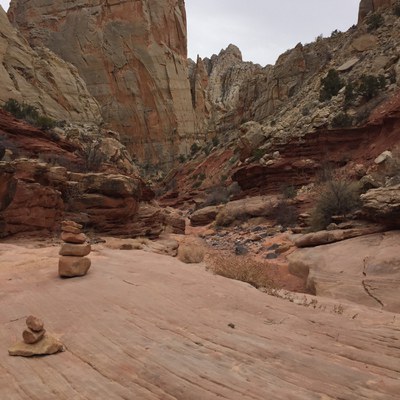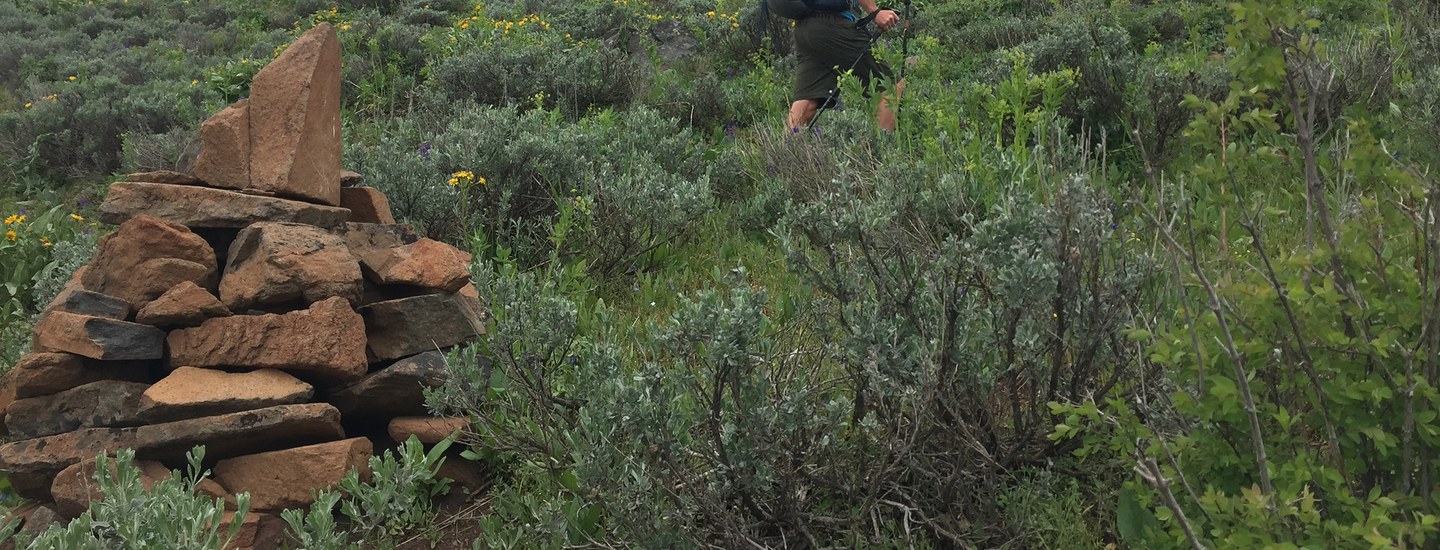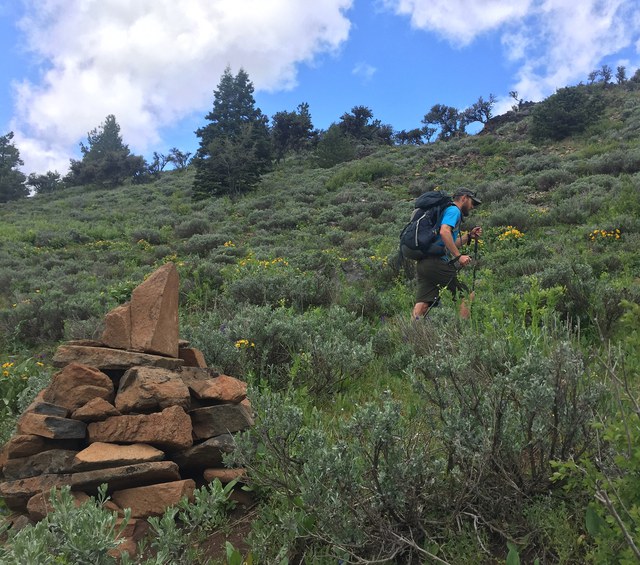Stacks of rocks you may see along trails or at scenic places are called cairns. The word cairn is derived from Gaelic and means “heap of stones.”
People have been piling rocks up for millenia—as waypoints, monuments, or means of artistic expression. In the US, when early European settlers arrived, they often left cairns as markers of where they went and where they had been. In backcountry areas today, rock cairns are still in use to guide hikers along sometimes difficult to spot trails.
In recent years, cairns have gained popularity in social media posts celebrating beautiful spots, or as a meditative practice, finding just the right rocks to balance in aesthetically pleasing ways.
Deschutes Land Trust Preserves do not use cairns to mark trails, and it is illegal to move any rocks at all in US National Parks.
In more rugged places where cairns are built as trailmarkers, changing these waypoints or building new cairns can mislead other hikers. In addition to damaging fragile top soil, leading others off-trail could cause serious harm to fellow trail users. For the safety of all, cairns should only ever be built or altered by authorized trail maintenance workers.

Some cairn builders may believe they are doing the responsible thing by dismantling their cairn after taking a photo and returning rocks to where they were found. However, moving stones to build a cairn compromises habitat in ways that can’t be put back. Moving stones increases erosion, disrupts fragile plant life, and can destroy the complex systems of life that make up our soils, which can take centuries to rebuild! Many animals also live under rocks, and taking these rocks away—even temporarily—removes essential habitat for our smaller wild neighbors.
Remember, Leave No Trace isn’t just about packing our trash out with us at the end of a hike. It’s also about being good stewards of the lands and waters we live on, so that all communities—human, animal, and plant alike—can thrive now and in the future. Stacking rocks to build a cairn, even temporarily, leaves much more than a trace of our passage.
A study of cairns by the National Park Service in 2000 made the following conclusions:
- Young children are the most common cairn builders.
- Family members often encourage this activity and create a positive experience for children wanting to “leave their mark” on the land.
- Adults also add stones to cairns.
- Building cairns can diminish the trail experience for other hikers.
Caring about cairns is every hiker’s responsibility, and it is a part of caring for our lands and waters. When you’re out hiking, leave rocks as you find them and never alter trail markers.
Learn more:
- I Can Throw My Peel on the Ground, Right?
- Being Better Stewards for Land and Wildlife
- Hiking Lightly on the Land
- Nature Night Recap: The Real Dirt on Soil!
- Nature Night Recap: Fungi in the Forest
Sources:
- Rock Cairns, U.S. National Park Service
- The problem with rock stacking: why it's harmful to nature and should be avoided, South African National Parks
- What are Rock Cairns & Why You Shouldn't Build Them, Bear Foot Theory
- Scientists Say: Hey, Hikers, Stop Stacking Rocks!, HowStuffWorks
- Caring for Cairns at Acadia National Park, American Trails
- The History of Rock Cairns and Why Stacking Rocks is Not Allowed in Capitol Reef, Cougar Ridge


